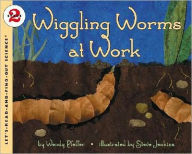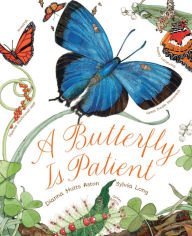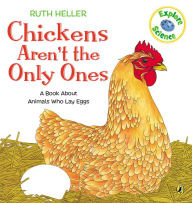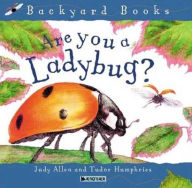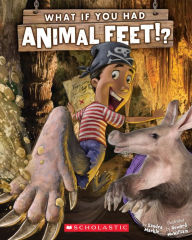Steve Jenkins has written and illustrated many nonfiction picture books for young readers, including the Caldecott Honor-winning What Do You Do with a Tail Like This? His books have been called stunning, eye-popping, inventive, gorgeous, masterful, extraordinary, playful, irresistible, compelling, engaging, accessible, glorious, and informative. He lives in Boulder, Colorado with his wife and frequent collaborator, Robin Page, and their children.
What Do You Do When Something Wants To Eat You?
Paperback
(Reprint)
- ISBN-13: 9780618152438
- Publisher: Houghton Mifflin Harcourt
- Publication date: 09/28/2001
- Edition description: Reprint
- Pages: 32
- Sales rank: 63,403
- Product dimensions: 10.25(w) x 8.00(h) x 0.13(d)
- Lexile: AD580L (what's this?)
- Age Range: 4 - 7 Years
What People are Saying About This
.
What would you do if something wanted to eat you? Walk on water? Stick out your tongue? Play dead? Animals in the wild use all kinds of methods to protect themselves from their enemies. Using dynamic and intricate cut-paper collages, Steve Jenkins explores the many fascinating and unique defense mechanisms creatures use to escape from danger.
Customers Who Bought This Item Also Bought
-
- Never Smile at a Monkey: And…
- by Steve JenkinsSteve Jenkins
-
- Almost Gone: The World's…
- by Steve JenkinsSteve Jenkins
-
- Biggest, Strongest, Fastest
- by Steve Jenkins
-
- How to Clean a Hippopotamus: A…
- by Robin PageSteve JenkinsSteve Jenkins
-
- Wiggling Worms at Work…
- by Wendy PfefferSteve Jenkins
-
- A Butterfly Is Patient:…
- by Dianna Hutts AstonSylvia Long
-
- Penguins!
- by Gail GibbonsGail Gibbons
-
- Ant Cities
- by Arthur DorrosArthur Dorros
-
- Venom
- by Marilyn Singer
-
- Dogs
- by Seymour Simon
-
- What If You Had Animal Eyes?
- by Sandra MarkleHoward McWilliam
-
- Chickens Aren't the Only…
- by Ruth Heller
-
- What If You Had An Animal Nose…
- by Sandra MarkleHoward McWilliam
-
- Where in the Wild?:…
- by David M. SchwartzDwight KuhnYael Schy
-
- Are You a Ladybug?
- by Judy AllenTudor Humphries
-
- What If You Had Animal Feet?
- by Sandra MarkleHoward McWilliam
Recently Viewed
"Jenkins has produced another marvel. . . . Young children will delight in first guessing, then seeing, how each of fourteen unusual animals avoids becoming someone else’s dinner." Horn Book
"Thrilling, beautiful . . . dramatic." Booklist, ALA
"The youngest animal enthusiasts will find this an intriguing introduction to adaptation." The Bulletin of the Center for Children's Books
Predators are depicted in pursuit of prey on each right-hand side of the spread; a flip of the page uncovers the clever escape mechanism employed by the would-be victim, from the bombardier beetle that can spray hot chemicals up to 500 times a second, to the glass snake that conveniently segments its tail. Whether curling up into an armor-plated ball, squirting clouds of ink, or imitating a leaf, the tricksters are described in a couple of sentences that invite further investigation of these survival techniques. Layered cut-paper collage animals are positioned in dramatic stances against textured handmade-paper backgrounds. In a few instances, the black typeface is difficult to discern when it is superimposed on the dark green of leaf or grass. One final question, "What would you do if something wanted to eat you?" takes readers into their own cat-and-mouse scenarios. A dashing look at natural escape routes.





